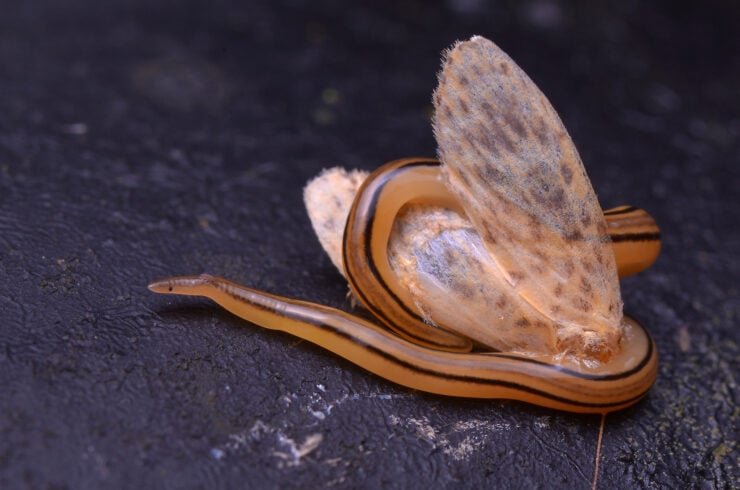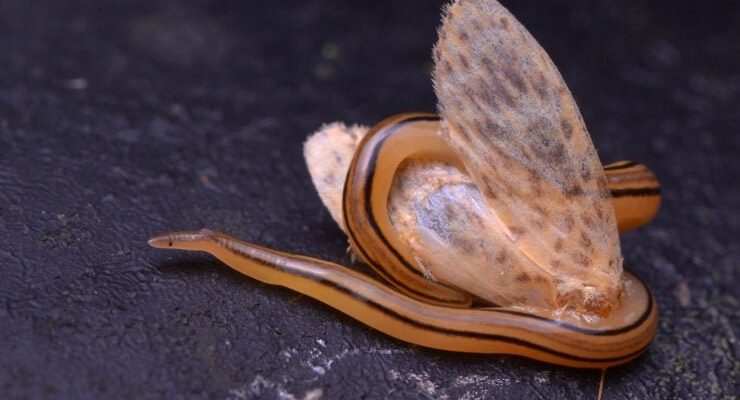
Now, ribbon worms aren’t your typical garden variety of worm. They belong to the phylum Nemertea and can be found in various marine environments. Their feeding methods are not just interesting; they’re downright essential for their survival. Understanding these techniques not only gives us insight into their role in the ecosystem but also allows us to appreciate the wonders of marine life. So, let’s get started on this underwater adventure!
What Are Ribbon Worms?
Before we delve into their feeding techniques, it’s helpful to know what ribbon worms are. These creatures have long, soft bodies that can reach impressive lengths—some species can grow up to 30 meters! They’re primarily found in marine environments, from shallow coastal waters to the deep sea. What makes them even more intriguing is their ability to regenerate lost body parts, much like a superhero coming back from defeat.
Ribbon worms are carnivorous and rely on their unique adaptations to capture prey. They possess a specialized feeding structure called a proboscis, which is like a hidden weapon. This proboscis can be elongated and thrust out quickly to snag unsuspecting prey. Imagine a superhero with a powerful net, ready to catch anything that comes close!
The Proboscis: A Key to Survival
The ribbon worm’s proboscis is a remarkable feature worth discussing in detail. When stalking their prey, ribbon worms can extend this structure rapidly, catching small fish, crustaceans, and other soft-bodied invertebrates. The proboscis often has sticky or venomous tips, making it exceptionally effective.
Here’s how it works: when a ribbon worm spots potential food, it can launch its proboscis out of its body like a slingshot, wrapping around the prey and drawing it back in. This swift movement is not just dramatic; it’s crucial for their survival in competitive marine environments. The proboscis allows them to catch food that would otherwise escape, granting them access to a wider variety of meals.
If you’re picturing a long, stretchy tongue similar to a frog’s, you’re on the right track. It’s a unique evolution designed for catching dinner!
Feeding Techniques: Hunting and Gathering
Ribbon worms use several feeding techniques, depending on the prey they’re targeting. When it comes to smaller food sources, they can employ a stealthy approach, often lying in wait and ambushing unsuspecting creatures. This method relies on patience and precision.
In contrast, when targeting larger prey, ribbon worms may need to adopt a more aggressive style. They can coil around their food, using their bodies to immobilize larger creatures while they work their proboscis. It’s a bit like a cat playing with a toy before finally making the pounce!
Another fascinating aspect of their feeding is their ability to consume soft-bodied organisms whole. You might think they’d find it challenging to digest such large meals, but their bodies are equipped to handle it. Ribbon worms have powerful digestive enzymes that break down their food efficiently, allowing for quick nutrient absorption.
Capturing Prey: The Role of Venom
One standout feature of some ribbon worms is their use of venom during feeding. Certain species produce toxic substances that can paralyze or even kill prey, ensuring a successful meal. This venomous approach provides them with a clear advantage when hunting.
When a ribbon worm deploys its proboscis, it may deliver venom through specialized cells. This can incapacitate fish and crustaceans swiftly, making them easier to swallow. Picture a well-trained assassin—silent, effective, and with a powerful edge over its targets.
The use of venom isn’t just exciting; it also highlights the complex interactions within marine ecosystems. By controlling prey populations, ribbon worms play a valuable role in maintaining the balance of their environments.
Feeding Behaviors: Social and Solitary
While many ribbon worms are solitary hunters, some species display intriguing social feeding behaviors. For example, certain ribbon worms may gather in areas rich in prey, sharing feeding zones with others. This can lead to fascinating dynamics as they compete for food while also leveraging their numbers to capture larger meals.
In these social situations, communication becomes essential. Ribbon worms may use chemical signals to indicate the presence of food or to warn others to stay away from their catch. Imagine a neighborhood potluck where everyone brings their favorite dish but keeps an eye on their own plate.
Despite these social behaviors, many ribbon worms still prefer a more solitary lifestyle. They rely on their stealth and hunting skills to capture food independently, often opting for the path of least competition.
Environmental Impact on Feeding Techniques
Ribbon worms are deeply affected by their environmental conditions. Changes in water temperature, salinity, or the availability of prey can influence their feeding habits. During warmer months, when food is plentiful, they may employ more aggressive hunting techniques. However, in leaner times, they might resort to a slower, more cautious approach.
Pollution and habitat destruction can also impact ribbon worm populations. As their environments change, so do their feeding strategies. Some species might struggle to find food, while others adapt rapidly. This adaptability is a testament to their resilience but also highlights the importance of conserving marine ecosystems.
Keeping our oceans healthy is vital—not just for ribbon worms but for the entire food chain. By protecting their habitats, we help ensure their survival and, by extension, the balance of marine life.
Ribbon worms are a prime example of how nature can be both beautiful and complex. Their feeding techniques showcase adaptability and ingenuity, allowing them to thrive in diverse environments. From the rapid deployment of their proboscis to their use of venom, these worms are fascinating predators that hold a vital place in the marine ecosystem.
As we continue to study these remarkable creatures, we gain valuable insights into the intricacies of underwater life. Whether you’re a marine biology enthusiast or just someone curious about the wonders of the ocean, ribbon worms offer a world of discovery. Let’s appreciate and protect these incredible organisms and the intricate ecosystems they inhabit!

